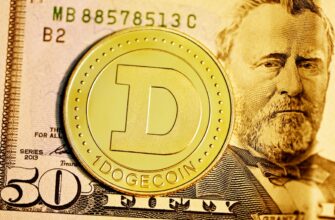## Introduction to Weekly Ethereum Day Trading on KuCoin
Day trading Ethereum on a weekly timeframe combines short-term execution with strategic perspective, allowing traders to capitalize on broader market trends while minimizing intraday noise. KuCoin’s robust platform offers advanced charting tools, high liquidity, and competitive fees—making it ideal for ETH traders. This manual unpacks how to leverage weekly charts for precise entries and exits, balancing technical analysis with KuCoin’s features for consistent results.
## Why the Weekly Timeframe Enhances Ethereum Day Trading
Unlike shorter timeframes, weekly charts filter out market volatility, revealing clearer support/resistance levels and sustained trends. Benefits include:
* Reduced emotional trading from price fluctuations
* Higher accuracy in spotting trend reversals
* Alignment with institutional trading patterns
* Efficient time commitment (1-2 analysis sessions per week)
## Setting Up KuCoin for Weekly ETH Trading
Optimize your workspace before executing trades:
1. **Account Setup**: Complete KYC verification for higher limits.
2. **Chart Configuration**: Select ‘1W’ timeframe on TradingView-integrated charts.
3. **Tool Activation**: Enable Fibonacci retracement, EMA ribbons, and volume indicators.
4. **Wallet Preparation**: Fund your account with USDT for ETH pairings.
## Step-by-Step Weekly Trading Strategy
### Identify Key Levels
Analyze 3-6 months of weekly ETH/USDT charts to mark:
* Major support/resistance zones
* Swing highs/lows
* Volume clusters
### Apply Technical Indicators
Combine these tools for confirmation:
* **EMA 20/50**: Golden cross/death cross signals
* **RSI (14-period)**: Overbought (>70) or oversold (<30) conditions
* **MACD Histogram**: Momentum shifts
### Execute Trades
1. Enter long positions when price bounces off support with bullish indicator alignment.
2. Short ETH near resistance with bearish confirmations.
3. Set stop-losses 3-5% below entry; take profit at next resistance.
## Risk Management Essentials
Protect capital with these rules:
* Limit single trades to 1-2% of total portfolio
* Use KuCoin's stop-limit orders religiously
* Diversify across 3-5 setups weekly
* Review trades every Sunday to adjust strategies
## Advanced KuCoin Tools for Weekly Analysis
Maximize platform features:
* **Backtesting**: Simulate strategies via historical data
* **Price Alerts**: Notify at key levels
* **Margin Trading**: Up to 10x leverage (use cautiously)
* **API Integration**: Automate indicator-based entries
## Weekly ETH Trading FAQ
### Is weekly trading suitable for beginners?
Yes, but start with demo accounts. Weekly charts simplify pattern recognition versus minute-by-minute trading.
### What's the minimum capital needed?
$500+ allows meaningful position sizing. KuCoin's low 0.1% spot fees make small-scale trading viable.
### How many weekly trades are optimal?
Aim for 2-4 high-conviction setups. Overtrading dilutes focus on quality signals.
### Which indicators work best on weekly ETH charts?
EMA crossovers, RSI divergences, and volume spikes offer the clearest signals. Avoid cluttering charts.
### Can I automate weekly strategies on KuCoin?
Partially. While full automation requires APIs, you can set conditional orders for pre-identified levels.
## Conclusion
Mastering Ethereum day trading on KuCoin's weekly timeframe demands discipline in technical analysis and risk control. By focusing on high-probability setups, leveraging KuCoin's tools, and reviewing performance weekly, traders can navigate ETH's volatility profitably. Consistency—not complexity—drives long-term success in this approach.








